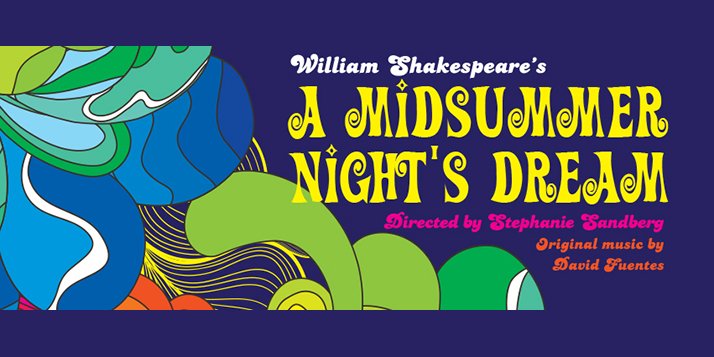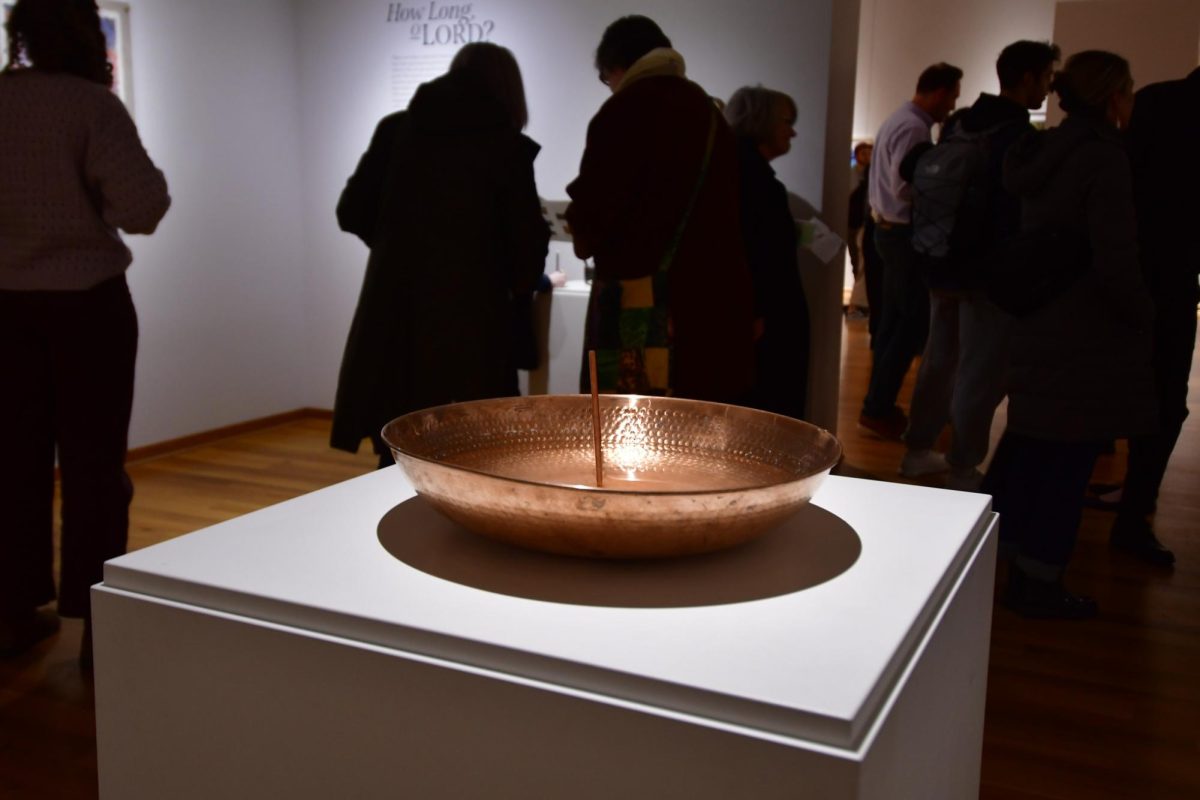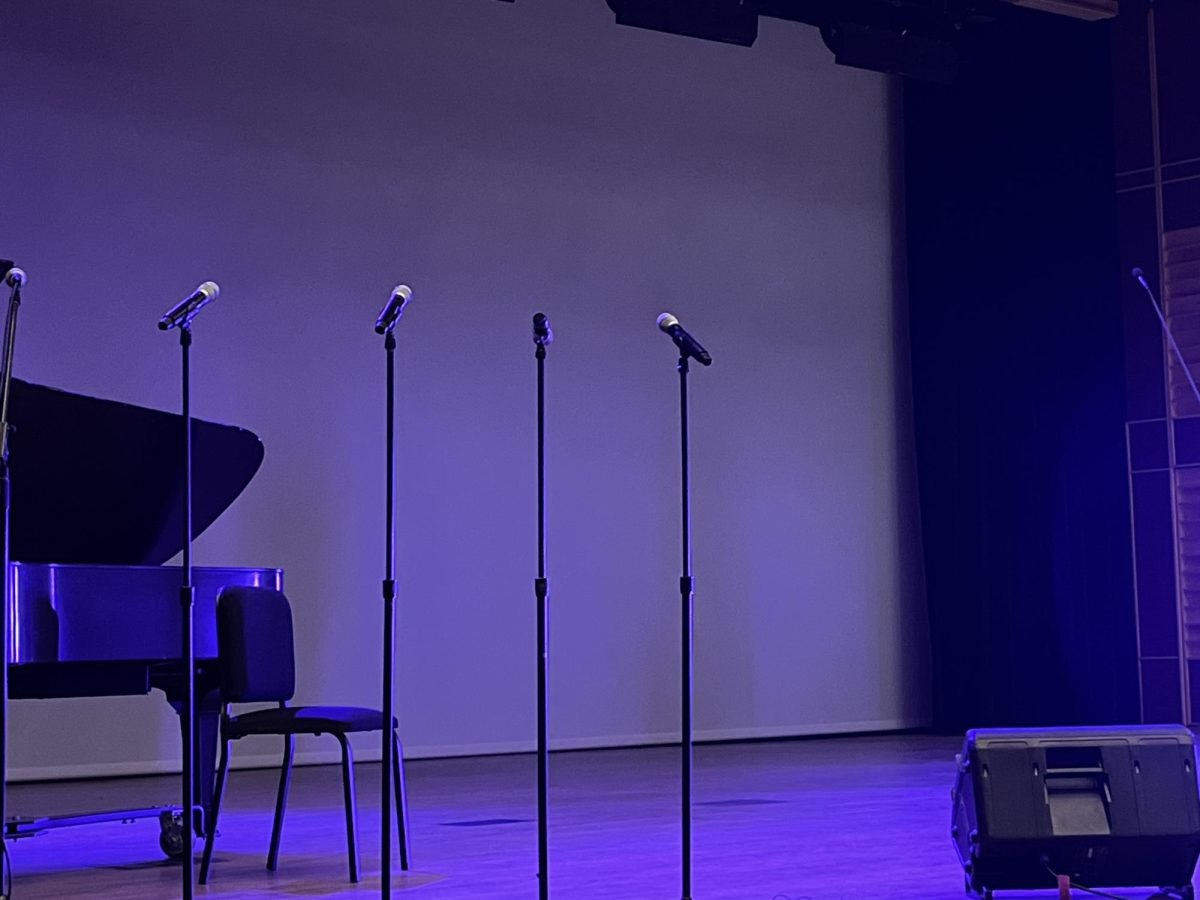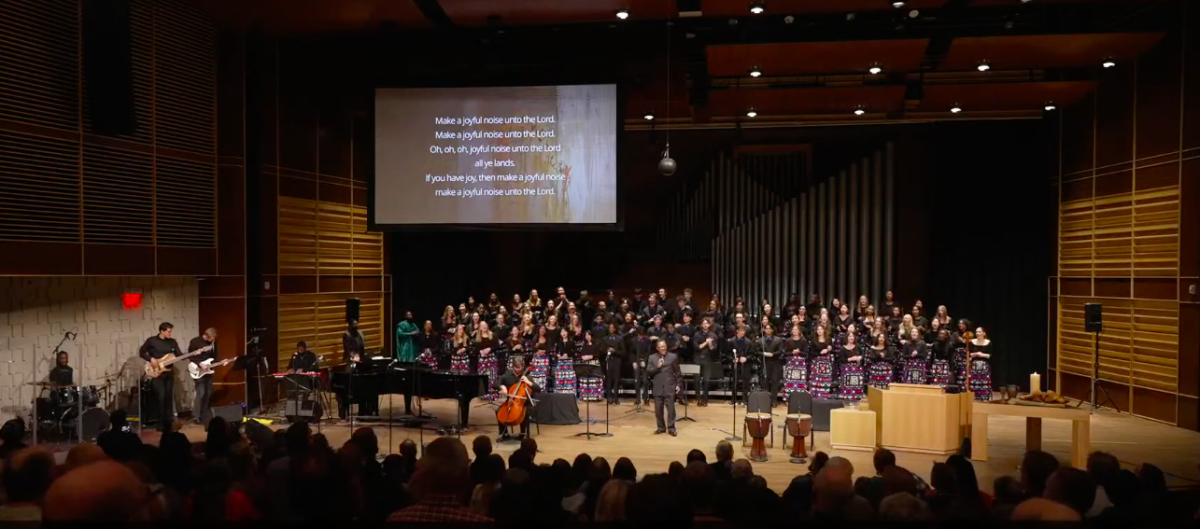It was Shakespeare meets the 1960s for the Calvin Theatre Company’s production of “A Midsummer Night’s Dream,” which ended its two-week engagement in the Gezon Auditorium last Saturday.
The production, which was directed by theatre professor Stephanie Sandberg with original music by professor David Fuentes, revolves around the plot of Shakespeare’s classic comedy about a pair of young lovers who, after a trip into the woods, are unwittingly manipulated by a mischievous band of fairies.
Shakespeare’s play additionally follows the storyline of a group of actors who are working to develop a play for the impending wedding of Theseus, the Duke of Athens, and Hippolyta.
Sandberg took this traditional story and gave it a unique twist. The Calvin Theatre Company’s production of “A Midsummer Night’s Dream” takes place in 1968 London and the woods that surround it.
The introduction of a contemporary setting allowed for a great deal of creative freedom, which Sandberg and her crew mostly took advantage of.
The biggest liberty taken by the production, as well as the most successful, was the choice to turn the fifth act’s play-within-a-play, “Pyramus and Thisbe,” into a full-fledged rock musical.
Using Shakespeare’s words and Fuentes’ music, the musical fifth act was a bold and imaginative risk that paid off in dividends.
Full of music that was wonderfully evocative of the 1960s, a catchy song entitled “Thou Art my Love, I Think” and excellent vocals by the actors playing the “Rude Mechanicals” (the name of the play’s acting troupe), the performance of “Pyramus and Thisbe” infused the play with an immensely appealing sense of energy.
It also allowed for an ingenious bit of audience interaction, as those who were in attendance effectively became members of the Duke’s wedding reception.
The 1960s theme also resulted in great costumes, with each storyline getting its own style. The London-set scenes and characters were dressed in black-and-white, which were juxtaposed with the vibrant and colorful costumes for the fairies and the grungy and ragged costumes for the “Rude Mechanicals.”
In addition to the costumes, the set’s rotating backdrop (from a drab cityscape to colorful flowers) and a psychedelic lighting pattern that occurred every time a spell was being cast, helped the production capture the 1960s attitude strikingly well.
The incorporation of a 1960s theme played a large role in the success of the Calvin Theatre Company’s production of “A Midsummer Night’s Dream,” but the show wouldn’t have been as compelling without a game and excellent cast of student actors who were up to the challenge of reciting (and in some cases singing) Shakespeare’s classic lines.
Alex Cook and Nathan Koster displayed a strong sense for physical comedy in their roles as Lysander and Demetrius, which made their climactic fight scene midway through the play all the more entertaining.
Cook and Koster additionally shared strong chemistry with co-stars Kit Graham and Taylor Emmons, who played their love interests Hermia and Helena with grace and aplomb.
Steven Barre and Sam Camp, who portrayed Peter Quince and Nick Bottom, both gave excellent performances, nailing the mannerisms of a panicked director and an arrogant lead actor extremely well.
Camp additionally handled the difficulty of acting while wearing a donkey’s head with ease. As Puck, who in many ways is the play’s closest thing to a lead role, Hannah Scanlon gave a spirited and energetic performance, nailing her character’s crazy facial expressions and almost child-like demeanor.
Anchored by a strong cast, great costumes and a musical fifth act, the Calvin Theatre Company’s production of “A Midsummer Night’s Dream” was an inventive take on a Shakespearean classic that proves that the future of theater at Calvin is bright.







